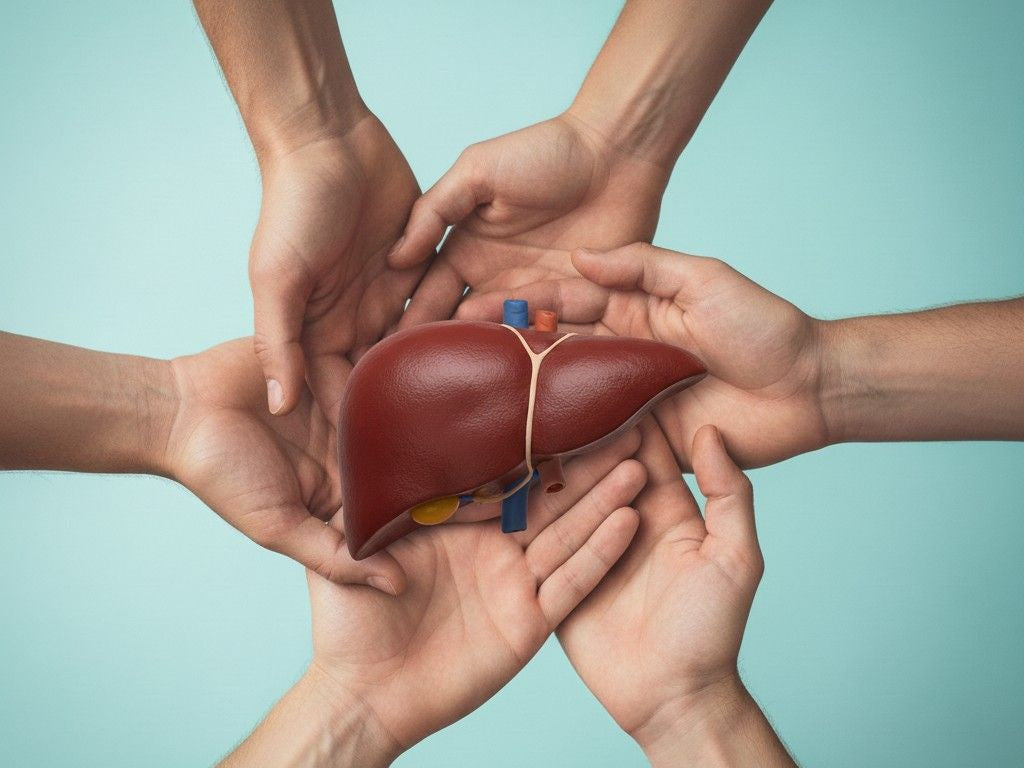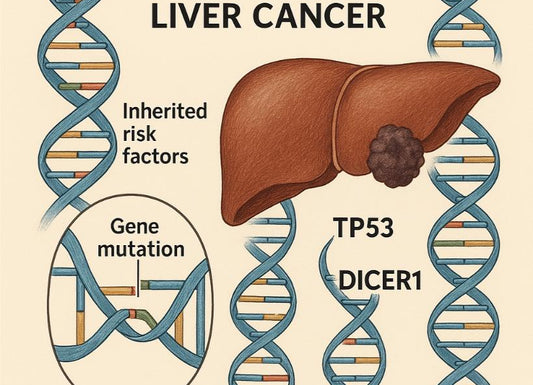How Many Times Can You Donate Your Liver? Living Donor Limits Explained
 Written By
Blen Shumiye, MD
Written By
Blen Shumiye, MD

If you’re thinking about living liver donation, you might be wondering: how many times can you donate your liver? The direct answer is that living liver donation is generally a one-time procedure. While your liver does have the remarkable ability to regenerate after donation, repeat donations are rarely performed because of safety, anatomical, and ethical considerations.
In this guide, we’ll explain why, what the risks are, and what alternatives exist for people who want to help a loved one or contribute to the transplant community.
How does the liver regenerate after donation?
Your liver is one of the only organs in the body that can grow back after part of it is removed. After a portion is donated, your remaining liver cells, called hepatocytes, begin to multiply. Over a few weeks to months, your liver can restore its volume and function to near-normal levels.
However, it’s important to know that regeneration restores function and size, not the exact original anatomy. Blood vessels, bile ducts, and connective tissue are permanently altered by the surgery, which is one of the reasons a second donation is generally not possible.
Key points about liver regeneration:
-
The liver can recover most of its volume within 6–12 weeks.
-
Regrowth varies depending on your age, overall health, and the amount removed.
-
While it regrows, your liver is still recovering from a major surgery, and repeated surgeries can be risky.
How does living liver donation work?

Living-donor liver transplantation involves removing a portion of a healthy person’s liver and transplanting it into someone whose liver is failing. The donor usually gives either the right lobe (larger portion) or left lateral segment (smaller portion, often for children).
Before donation, you undergo extensive evaluations to ensure you are healthy enough for surgery. This includes:
-
Blood tests to check liver function
-
Imaging scans to assess liver size and anatomy
-
Lifestyle and medical history reviews
-
Psychological evaluation to ensure you are prepared for surgery and recovery
Not everyone qualifies to donate. These safeguards help protect your health and reduce risks.
Why can’t you donate again even though the liver regrows?
It may seem logical that if your liver grows back, you could donate a second time. But there are several reasons why this is not typically allowed.
1. Surgery changes your liver’s anatomy
After the first donation, scar tissue (called adhesions) forms, and blood vessels and bile ducts are altered. Performing a second donation would be technically much more difficult and increase the risk of:
-
Bleeding
-
Bile leaks
-
Injury to remaining liver structures
2. Cumulative physical stress
Even though your liver regenerates, repeated major surgery can stress your body and your liver. Surgery and anesthesia temporarily reduce liver function, and multiple operations increase the chance of complications.
3. Limited safety data
There are very few documented cases of repeat living liver donations. Because safety data is limited, transplant programs follow a conservative approach, recommending a single donation to minimize risks.
4. Ethical and program considerations
Transplant programs have a duty to protect healthy donors. Repeating a major surgery without strong evidence of safety would go against this principle. Programs prioritize donor safety over potential benefits, and repeat donations are rarely, if ever, approved.
What are the risks of living liver donation?

Even a single donation carries real risks, which is why repeat donations are discouraged. Risks include:
-
Surgical complications: bleeding, infection, wound problems, hernia
-
Liver-specific complications: temporary liver dysfunction, bile duct injuries
-
Serious events: rarely, need for reoperation or even death
Large studies report donor mortality rates of less than 1%, but complications are higher. These risks make transplant teams cautious about any second donation.
Could exceptions ever be made?
While repeat donations are almost never done, there could be rare, extraordinary situations:
-
Different organ or tissue donation: You could safely donate something else, like bone marrow, multiple times.
-
Unique anatomical circumstances: A donor with minimal scarring and favorable liver anatomy might be evaluated case by case, but most centers still decline repeat liver donations.
Even in these rare cases, a full ethics and surgical review is required.
What are alternatives if a loved one needs a liver?
If someone you care about needs a liver and a prior donor cannot donate again, there are safer alternatives:
-
Deceased-donor transplantation
-
Livers from deceased donors are allocated based on medical urgency (MELD score in the U.S.).
-
While waiting times vary, deceased donation remains a primary source of organs.
-
Living donation from a different donor
-
Another healthy family member or friend may qualify.
-
Non-directed donors (altruistic donors) are also considered.
-
Paired or chain donation
-
Special programs match donors and recipients so everyone receives a compatible liver.
-
This is less common than kidney paired donation but is growing.
-
Medical management and clinical trials
-
Some patients benefit from bridge therapies or trial participation while awaiting transplant.
-
Always consult your transplant team about options.
Recovery after liver donation

Most donors recover over weeks to a few months, returning to normal activities within 6–12 weeks depending on the surgery. Follow-up includes:
-
Regular blood tests to monitor liver function
-
Imaging scans if needed
-
Lifestyle recommendations to support liver health
Long-term complications are uncommon, but some donors may experience ongoing physical or psychosocial effects. Lifetime follow-up is recommended.
Read on Liver Transplant Life Expectancy and Tips for Long-term Health
Questions to ask if you’ve already donated
If you’ve donated before and someone asks you to donate again, consider these questions:
-
Has a surgical and ethics review been done?
-
What do recent imaging scans show about your liver’s regrowth and adhesions?
-
What do outcome data and guidelines say about repeat donation?
-
Are there safer alternatives for the recipient, like a different living donor or deceased donor liver?
A conversation with an independent donor advocate, transplant surgeon, and ethics committee can help guide safe decisions.
Final Thoughts
The decision to be a living liver donor is profound, offering a direct path to saving a life. While the liver's remarkable ability to regenerate is a biological wonder, repeat donations are universally discouraged because donor safety is the absolute priority. The changes caused by the initial surgery, coupled with the cumulative stress of major procedures, mean a second donation carries unacceptable risks. For donors, the commitment is lifelong: protect the health you have and honor the gift you gave by adhering to your recovery and follow-up plan. For loved ones in need, support and advocacy for safer alternatives, like paired donation or the deceased donor list, are the best path forward.
Take Control of Your Liver Health
Whether you are considering donation or are a past donor, understanding your baseline health is essential. Liver function is a key indicator of overall wellness, influencing everything from metabolism to recovery. Don’t wait for a clinic appointment to gain peace of mind.
Ribbon Checkup offers convenient, at-home liver tests that provide fast, accurate insights into your current health status. Empower yourself with the knowledge to make informed health decisions.
Related resources
-
What Disqualifies You from a Liver Transplant? Eligibility, Denial, and What Comes Next
-
End-Stage Liver Disease: What Are the Final Symptoms to Watch For?
References
Clinic, C. (2023, August 31). Living liver donation allows a healthy person to donate a piece of their liver to someone in need. Surgeons remove the piece of liver and transplant it right away. Cleveland Clinic. https://my.clevelandclinic.org/health/procedures/21083-living-donor-liver-transplant?utm_source=chatgpt.com
Kim, P. T. W., & Testa, G. (2016). Living donor liver transplantation in the USA. Hepatobiliary Surgery and Nutrition, 5(2), 133. https://doi.org/10.3978/j.issn.2304-3881.2015.06.01
Living-donor transplantation - Overview. (2025). Mayo Clinic; https://www.mayoclinic.org/departments-centers/living-donor-transplantation/overview/ovc-20545462?utm_source=chatgpt.com
Michalopoulos, G. K. (2009). Liver Regeneration after Partial Hepatectomy. American Journal of Pathology, 176(1), 2–13. https://doi.org/10.2353/ajpath.2010.090675
Nguyen-Lefebvre, A. T., Ghosh, S., Baciu, C., Hasjim, B. J., Naimimohasses, S., Oldani, G., Pasini, E., Brudno, M., Selzner, N., Wrana, J., & Bhat, M. (2025). Modelling the liver’s regenerative capacity across different clinical conditions. JHEP Reports, 7(8), 101465. https://doi.org/10.1016/j.jhepr.2025.101465

Dr. Blen is a seasoned medical writer and General Practitioner with over five years of clinical experience. She blends deep medical expertise with a gift for clear, compassionate communication to create evidence-based content that informs and empowers. Her work spans clinical research, patient education, and health journalism, establishing her as a trusted voice in both professional and public health spheres.



